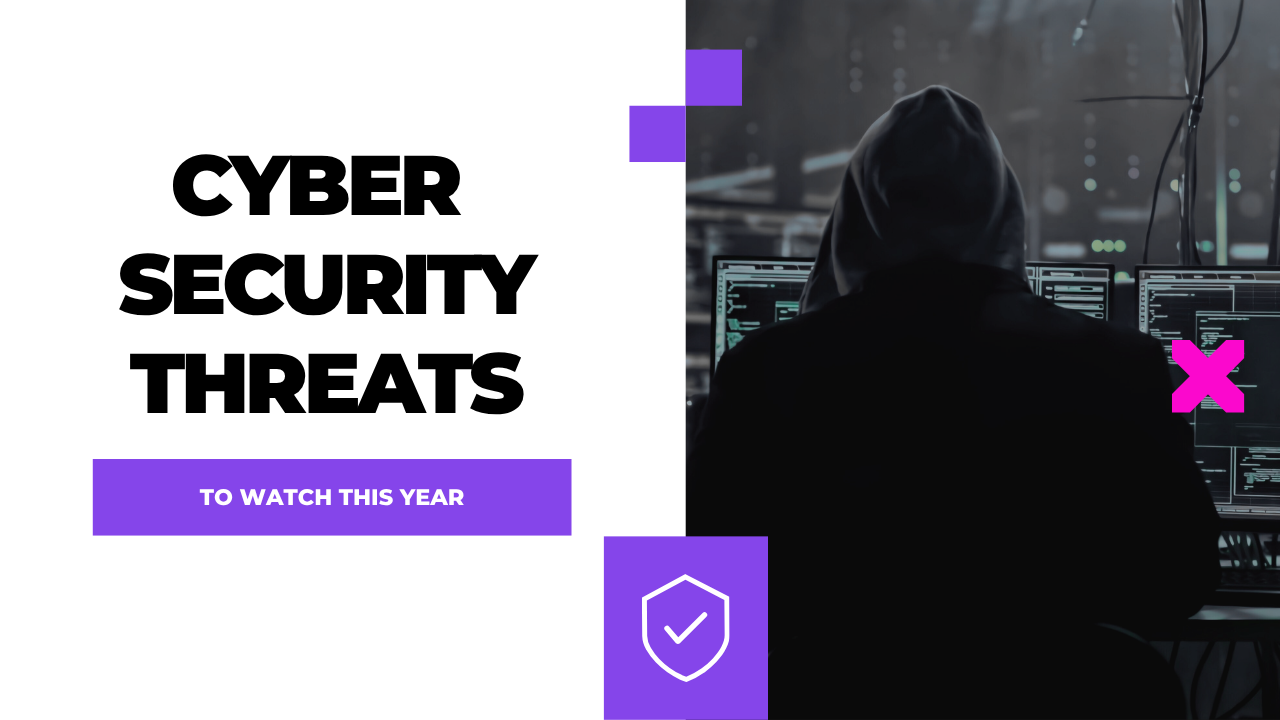The rate of change in cybersecurity risks is quite concerning in this era of hyper-connected digital technology. The internet is more susceptible than ever before to threats such as widespread ransomware assaults, complex phishing schemes, and new AI-based dangers. It is crucial to keep updated on existing and new cybersecurity dangers in order to secure sensitive data and digital assets, especially since businesses, governments, and individuals are becoming more reliant on technology.
Find out what the biggest cybersecurity threats are in 2025 and how to stay safe from them.
1. Cyberattacks Driven by AI
The resources accessible to hackers are growing in tandem with the sophistication of artificial intelligence. These days, hackers can automate assaults, find security flaws, and even craft convincing phishing emails with the help of AI.
This is how it works: artificial intelligence can imitate human speech patterns, create deepfake movies or audio that sounds plausible, and search networks for vulnerabilities much faster than a human hacker could.
The risks involved:
Attacks driven by AI are more evasive and can instantly change tactics in response to conventional security protocols.
Approach to defence:
- To combat cybercrime head-on, invest in AI-powered solutions.
- Instruct workers to recognise suspicious activity, regardless of how plausible it appears.
- Update your security measures and surveillance software regularly.
2. The SaaS Model for Ransomware
Professional hackers are no longer the only ones capable of launching ransomware assaults. Thanks to RaaS platforms, even criminals without much expertise may “rent” ransomware toolkits from more seasoned cybercrime ringleaders and use them to conduct deadly attacks.
Current instances: The police, schools, and hospitals have all been the targets of these attacks. Crypto payments are frequently demanded by attackers, which makes monitoring them difficult. The threat is high since these attacks have the potential to cripple essential services, resulting in irreparable harm to data, finances, and reputation.
Approach to defence: Make sure you back up your data off-line on a regular schedule. Take advantage of EDR (endpoint detection and response) systems. Maintain conducting standard security inspections and tests for penetration.
3. Exposures in Cloud Security
Criminals are taking advantage of poorly implemented security measures and incorrectly configured cloud settings as more and more businesses shift their activities to the cloud.
Typical problems: Inadequate permissions Data storage without encryption Api security is lacking The risks involved:
Hundreds of client records or company papers could be at risk due to a single configuration error. Approach to defence: Use the “least privilege” approach Implement a combination of authentication methods Using security information and event management (SIEM) solutions, keep an eye on cloud environments in real-time.
4. Social Engineering and Phishing 2.0
Though not a new concept, phishing is changing. Criminals in the cyber world increasingly employ AI-generated content to imitate well-known brands and conduct spear-phishing assaults targeted at C-suite executives.
Some examples of modern methods are:
Calls using deepfake voices Attacks using QR codes
Breach of company email systems (BEC)
Reasons why it’s risky: Phishing takes advantage of people’s gullibility to get into networks.
Approach to defence: Inform workers by providing them with security awareness training on a regular basis.
Set up anti-phishing and email filtering mechanisms.
Promote an attitude of complete distrust
5. Attacks Based on the Internet of Things
The proliferation of Internet of Things (IoT) devices in homes and companies has opened the door for cyber threats.
Vulnerable device examples include: Controlled temperature systems Monitors for safety Interconnected healthcare devices This is problematic since many IoT devices do not have adequate security measures in place, which leaves them vulnerable to botnets and other forms of network intrusion.
Approach to defence: Quickly update the default passwords on all devices. Keep firmware up-to-date Ensure that essential business systems are isolated from IoT devices.
6. Attacks on the Supply Chain
Criminals are focussing on vendors as a means to breach bigger networks. The notorious SolarWinds attack, which affected numerous government entities, brought attention to this strategy. Organisations frequently put their faith in vendors, which might lead them to ignore security flaws in external systems, which is a major risk.
Approach to defence: Verify all potential vendors and business associates thoroughly. Demand adherence to cybersecurity standards Keep tabs on where code has come from by using software bills of materials (SBOMs).
7. Vulnerability is zero-day exploits.
A zero-day vulnerability is an unpatched software defect because the vendor is unaware of it. In the meantime, hackers take advantage of these vulnerabilities.
Most recent worries: Popular apps, operating systems, and major browsers have all seen an increase in zero-day assaults. The fact that conventional antivirus software misses these flaws until it’s too late makes it extremely risky.
Approach to defence: Never stop updating your software. Collaboration with cybersecurity firms can help identify threats early on.
Watch out for any odd activity on the network infrastructure development.
In summary
In 2025, cyberattacks are more sophisticated, specific, and destructive than in any previous year. A complicated threat environment has emerged as a result of the merging of artificial intelligence, the internet of things (IoT), cloud computing, and human mistake.
Everyone from company owners and IT pros to regular internet users has to be aware of these dangers in order to protect themselves online. To remain ahead of hackers, it is vital to implement proactive defence methods, keep informed, and promote a culture of cybersecurity awareness.
Being resilient is the best defence in a world full with unavoidable digital dangers.

